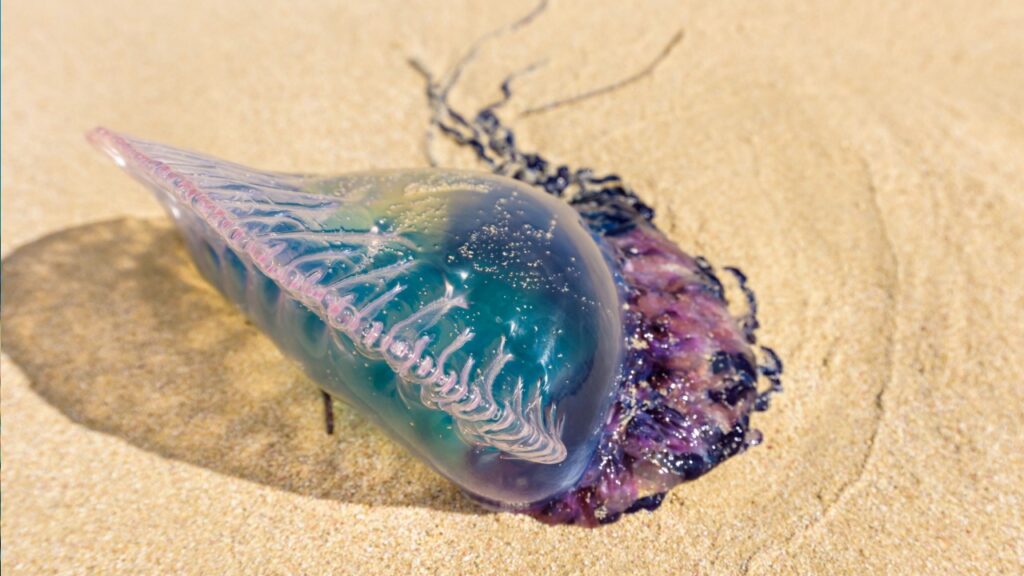The Portuguese man-of-war, with its vibrant blue float and dangerously venomous tentacles, might seem like the ultimate predator of the seas. But even this fearsome creature has its own set of natural enemies. While many ocean-goers flee at the sight of these jellyfish-like organisms, there are several brave (or perhaps just hungry) creatures that see them as a tasty meal. Despite its powerful sting, the man-of-war isn’t invincible.
Loggerhead Sea Turtle

The loggerhead sea turtle, with its powerful jaws and tough skin, is one of the few creatures that can safely munch on a Portuguese man-of-war. These turtles have a special adaptation that protects their throats and stomachs from the man-of-war’s stinging cells. They’ll often seek out these floating snacks, gulping them down whole. For the loggerhead, a man-of-war is just another day’s meal in the vast ocean buffet.
Ocean Sunfish
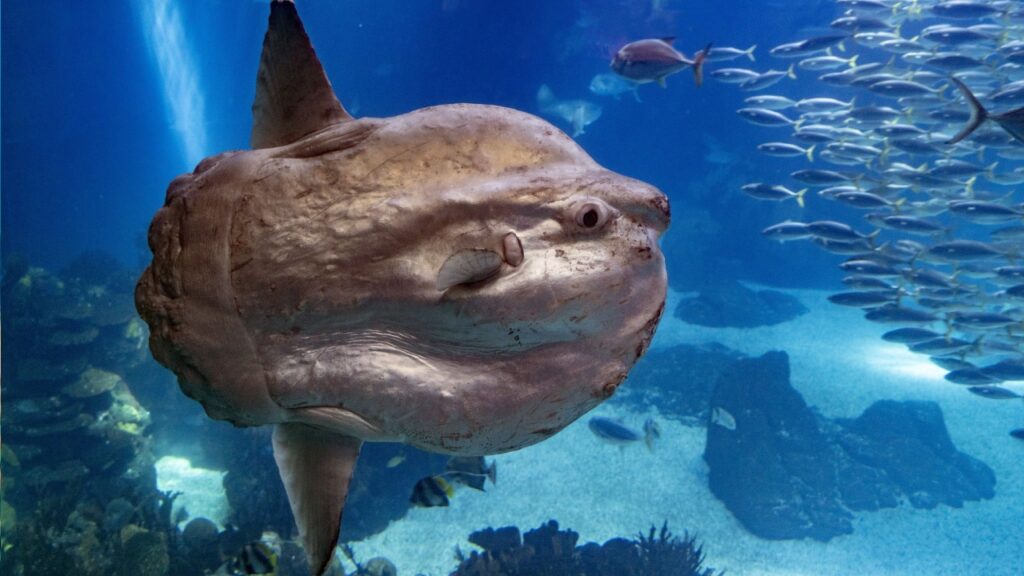
The ocean sunfish, also known as the mola mola, is a peculiar-looking fish that enjoys dining on jellyfish and similar creatures. Despite the man-of-war’s venomous tentacles, the sunfish’s thick, rubbery skin provides excellent protection. These giant, flat fish will swim up to a man-of-war and slurp it up like spaghetti. It’s a sight that would surprise many beachgoers who usually avoid these floating terrors.
Blue Sea Slug
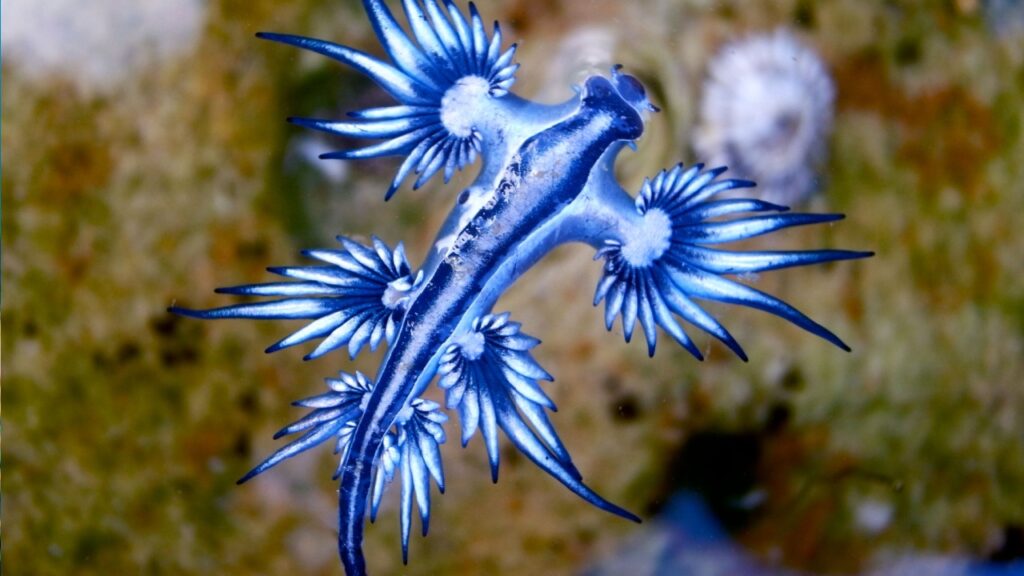
The blue sea slug, or Glaucus atlanticus, is a tiny but fierce predator of the man-of-war. This beautiful creature, often called the blue dragon, actively hunts and eats man-of-wars. What’s more, it can store the man-of-war’s stinging cells in its own body and use them for defense. Talk about turning the tables on a predator!
Purple Ocean Snail
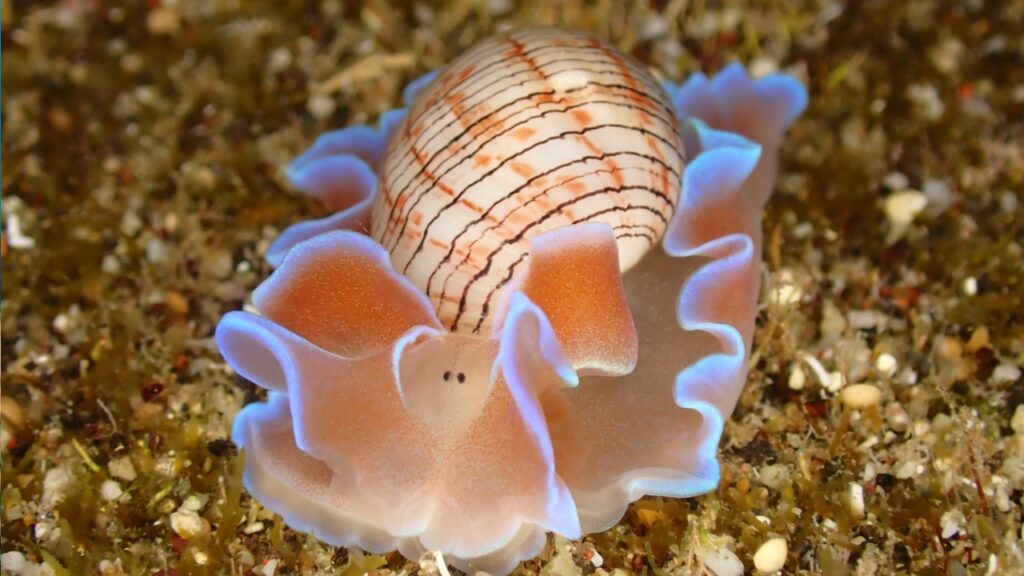
The purple ocean snail is another surprising predator of the Portuguese man-of-war. This small mollusk builds a raft of bubbles to float on the ocean surface, where it hunts for its favorite prey. When it encounters a man-of-war, it uses its radula (a tongue-like organ) to scrape off and eat parts of the creature. It’s a slow but effective method of tackling this dangerous meal.
Blanket Octopus
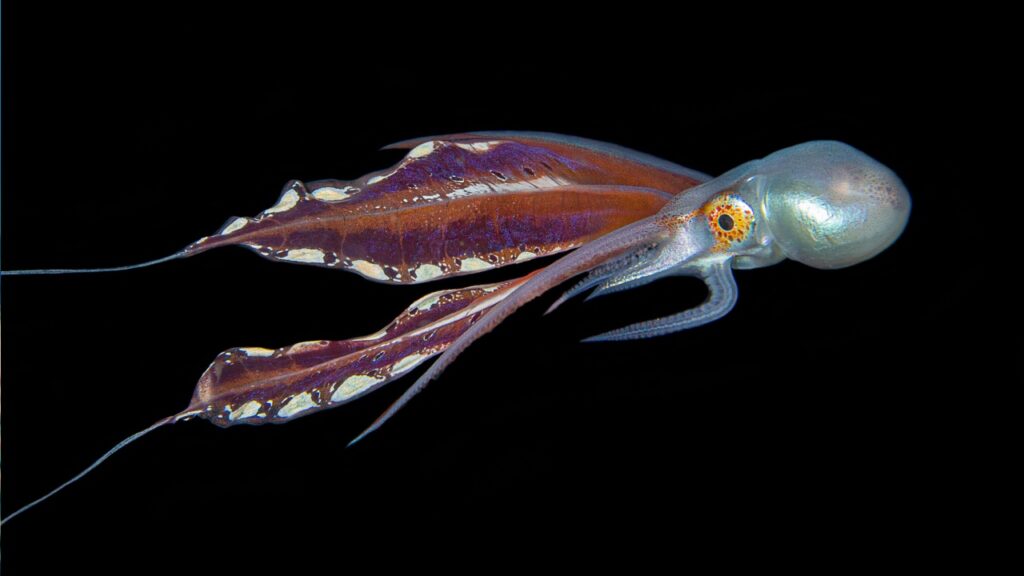
The blanket octopus is a master of both disguise and daring dining. Female blanket octopuses are known to tear off the man-of-war’s tentacles and wield them as weapons. But they don’t stop there – they also eat parts of the man-of-war. These octopuses are immune to the venom, making the man-of-war an easy and nutritious meal.
Blue Button Jelly
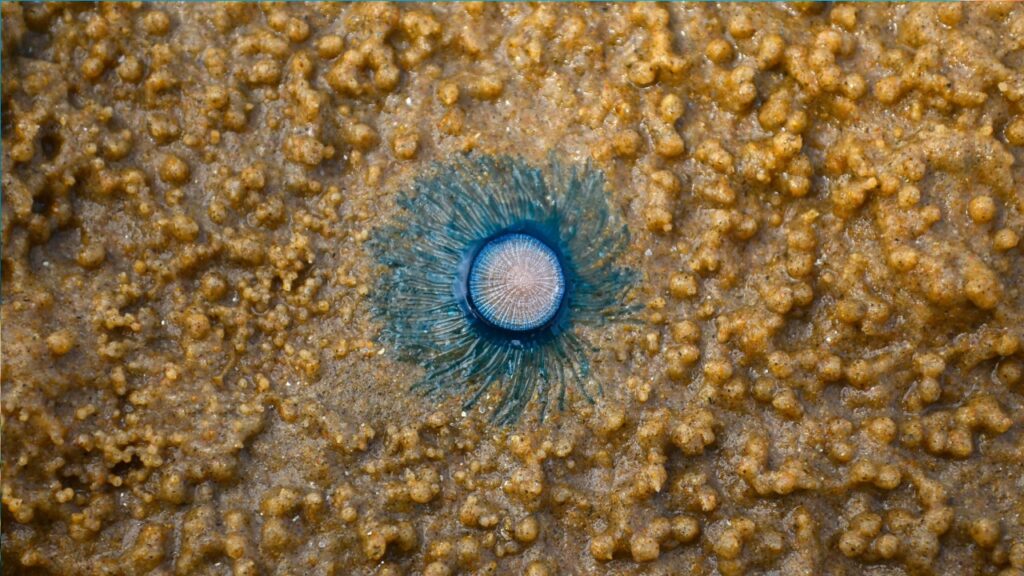
The blue button jelly, despite its name, isn’t actually a jellyfish. It’s a colonial organism similar to the man-of-war, but much smaller. Surprisingly, these tiny creatures have been observed feeding on small bits of man-of-wars. It’s a case of the little guy taking on the big bully of the seas.
Bearded Goby
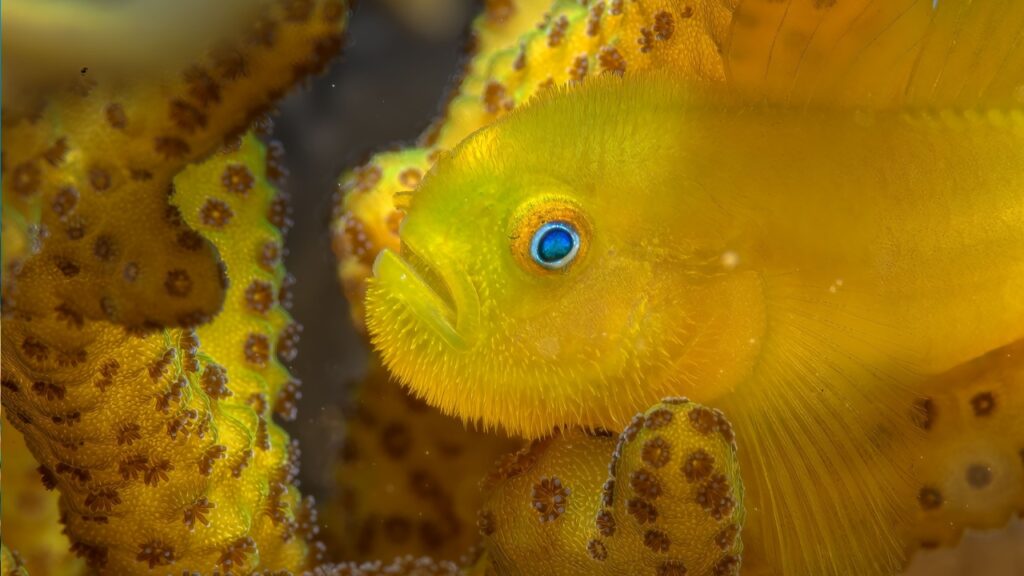
The bearded goby is a small fish with a big appetite for dangerous meals. Found in the waters off southern Africa, this fish has been observed nibbling on beached Portuguese man-of-wars. Scientists believe they may have some level of immunity to the venom, allowing them to take advantage of this risky food source.
Violet Sea Snail
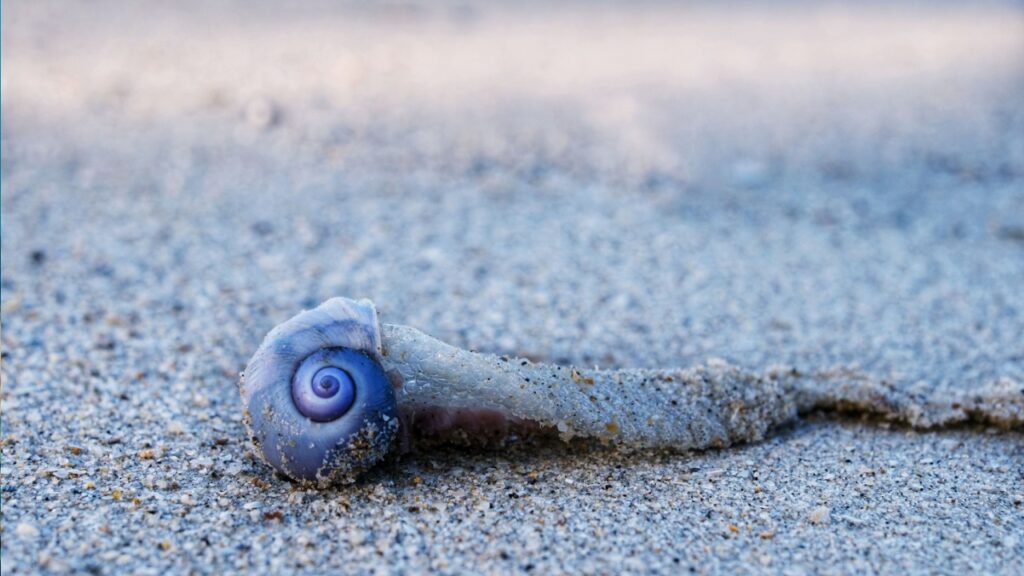
Similar to its purple cousin, the violet sea snail is another floating predator of the man-of-war. These snails create a bubble raft to float on the ocean surface, where they hunt for their prey. When they encounter a man-of-war, they use their specialized radula to scrape off and consume parts of the creature, seemingly unaffected by its powerful sting.
Man-of-War Fish
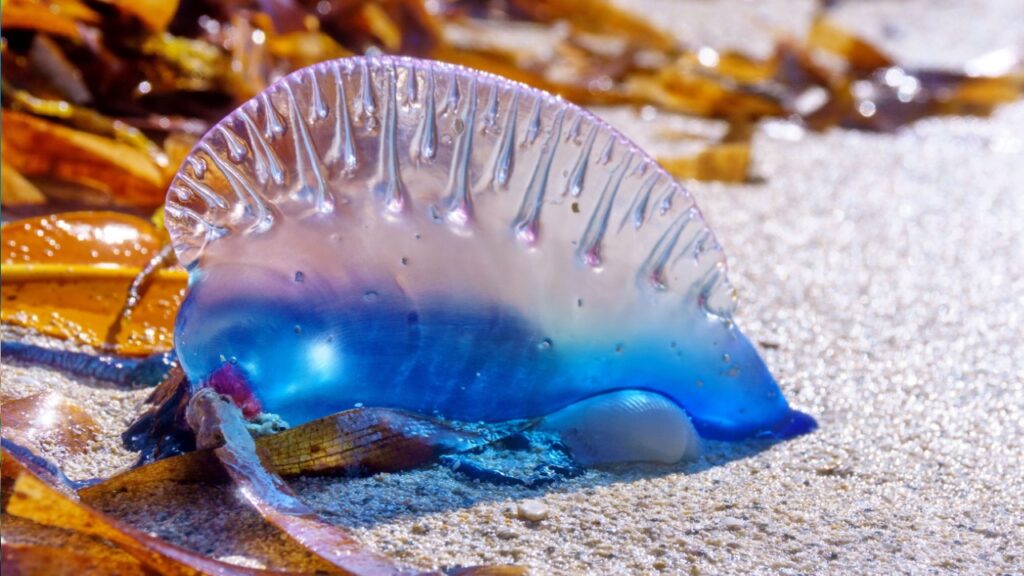
In a twist of irony, the man-of-war fish is actually a predator of its namesake. This small fish lives among the tentacles of the Portuguese man-of-war, protected from other predators by the venomous tendrils. It feeds on small fish caught by the man-of-war, but also nibbles on parts of its host. Talk about biting the hand that feeds you!
Leatherback Sea Turtle
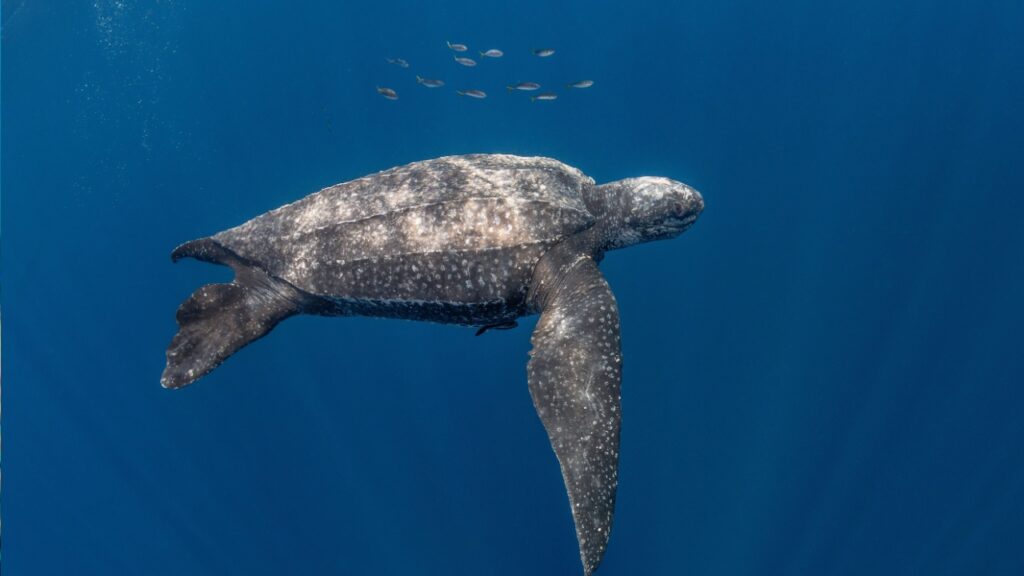
The leatherback sea turtle, the largest of all sea turtles, is another formidable predator of the Portuguese man-of-war. Like its loggerhead cousin, the leatherback has adaptations that protect it from the man-of-war’s sting. Its tough, rubbery skin and special lining in its mouth and throat allow it to swallow these venomous creatures without harm.
Blue Shark
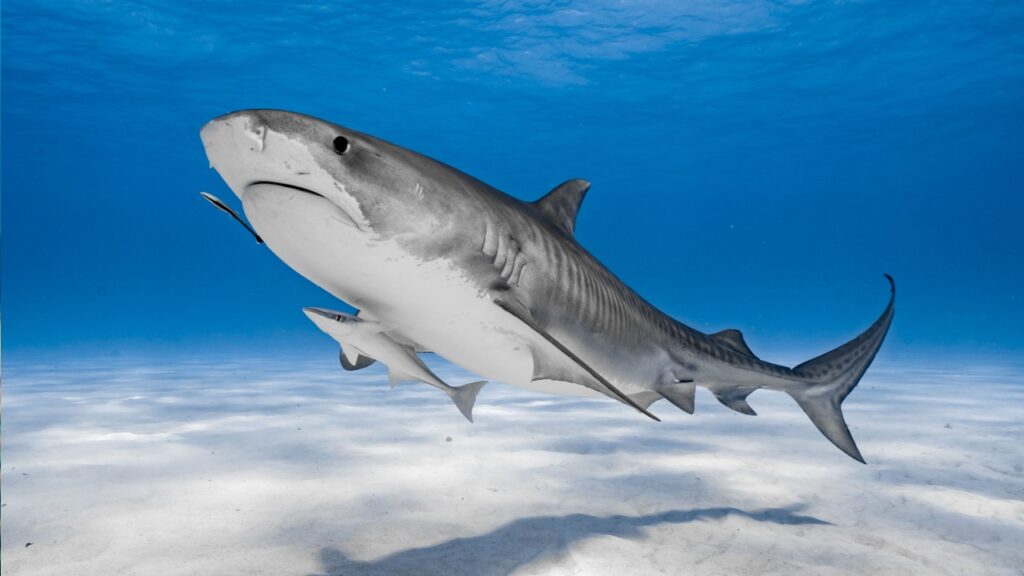
While not a primary food source, Portuguese man-of-wars are occasionally eaten by blue sharks. These oceanic predators have been observed feeding on man-of-wars, particularly when other prey is scarce. Their tough skin likely provides some protection against the stinging tentacles.
Shepherd’s Beaked Whale
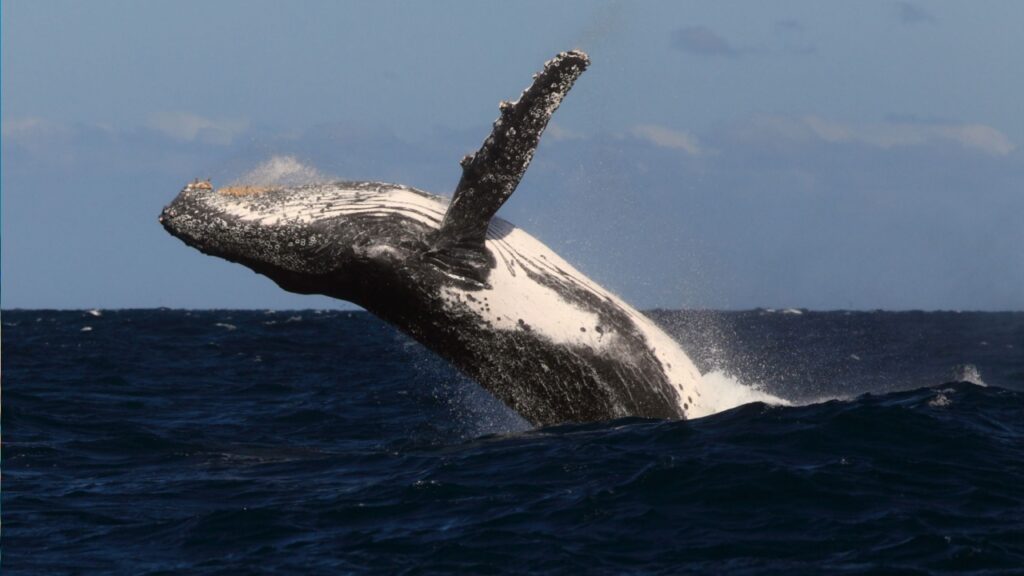
In the deep waters of the southern hemisphere, the elusive shepherd’s beaked whale has been found with remnants of Portuguese man-of-wars in its stomach. While not a common occurrence, it shows that even deep-diving whales aren’t opposed to snacking on these surface-dwelling creatures when the opportunity arises.
Albatross

Some species of albatross have been observed feeding parts of Portuguese man-of-wars to their chicks. These seabirds might pick at the less venomous parts of the man-of-war, such as the float, to feed their young. It’s a risky meal, but in the harsh world of survival, every food source counts.
Sailing Hydroid
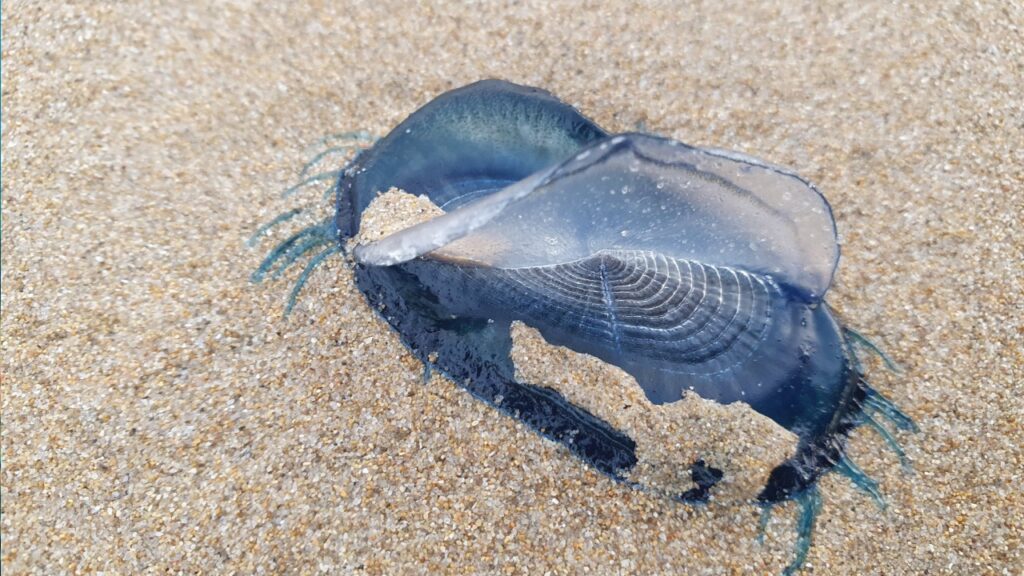
The sailing hydroid is another lesser-known predator of the Portuguese man-of-war. This small, jellyfish-like creature has been observed feeding on man-of-war tentacles. Like the blue sea slug, it can store the man-of-war’s stinging cells for its own use, turning its prey’s weapon into its own defense mechanism.
Bluefish
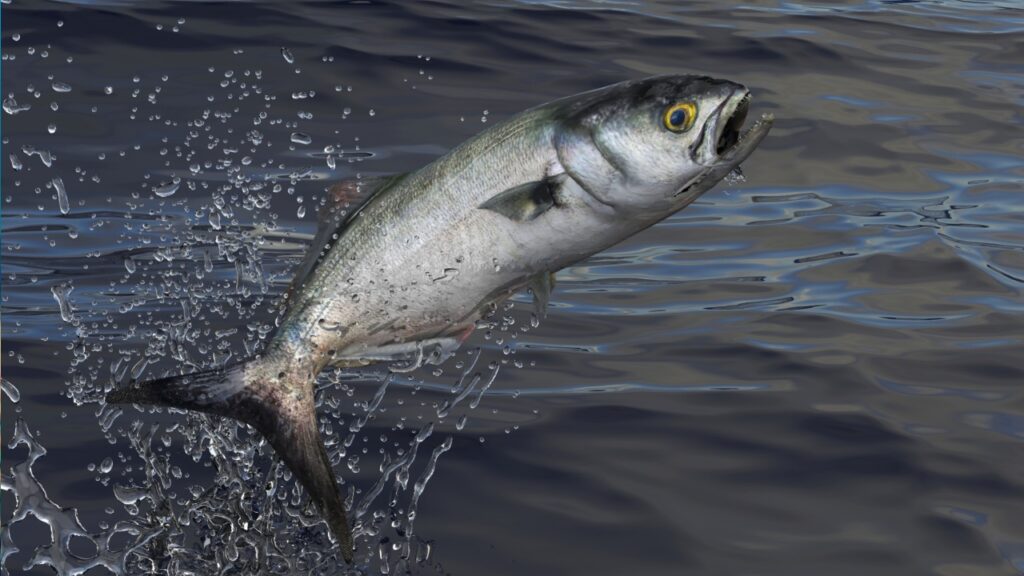
Bluefish, known for their aggressive feeding behavior, have been observed occasionally feeding on Portuguese man-of-wars. These predatory fish are known to attack almost anything they can fit in their mouths. While man-of-wars aren’t their primary food source, bluefish have been seen taking bites out of them, especially when other prey is scarce. Their tough mouths may offer some protection against the stinging cells.
Yellowfin Tuna

Yellowfin tuna, one of the ocean’s top predators, has surprised scientists by occasionally snacking on Portuguese man-of-wars. While these fish primarily feed on smaller fish and squid, they’ve been found with man-of-war remains in their stomachs. It’s thought that the tuna’s speed and tough skin allow it to snatch parts of the man-of-war without getting stung too badly.
Becky is a fervent wildlife enthusiast and pet care expert with a diploma in canine nutrition. Her love for animals stretches beyond the domestic, embracing the wild tapestry of global fauna. With over a decade of experience in animal welfare, Becky lends her expertise to OutlandishOwl through insightful articles, captivating wildlife information, and invaluable guidance on pet nutrition. Her work embodies a deep commitment to understanding the intricate lives of animals and a passion for educating others on sustaining natural habitats. Becky's hands-on conservation efforts and her knack for translating complex dietary science into practical pet feeding tips make her an indispensable voice for creatures great and small.

